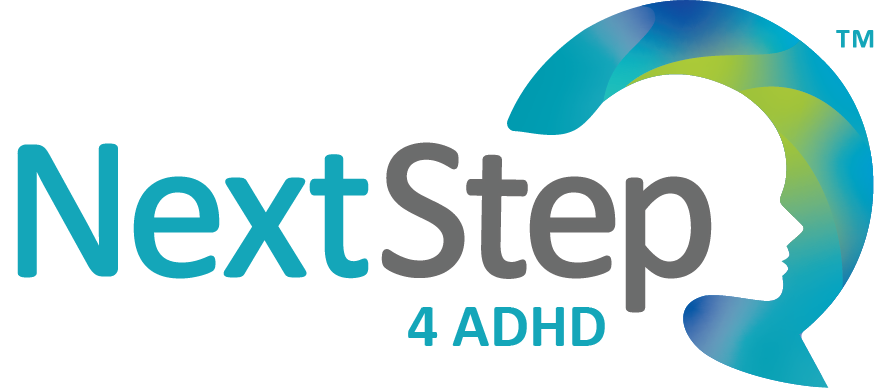
It’s Time for College Applications: Tips for Teens with ADHD
Applying to college is stressful for all teens, but ADHD can make the application process even more stressful.
Here at Next Step 4 ADHD, we’re committed to helping manage your teen’s ADHD so s/he can thrive in all of his/her endeavors — including applying for college. In this article, we’ll cover practical strategies for making the most of your college application process.
1. Start the College Application Process Early
Some universities had early deadlines that quickly approaching (November), but there are still plenty of colleges still accepting applications. Another wave of deadlines isn’t until January, which means now is one of the busiest college application seasons for your teen.
Most colleges’ deadlines fall between November and February. The deadline for incoming freshmen at the University of Louisville is as late as February 15. If your teen is interested in a particular school, be sure to write down all deadlines on a family calendar.
You can find a list of deadlines for the top 50 colleges and universities here. Be sure to confirm dates on the college website too.
2. Create a Top List of Colleges
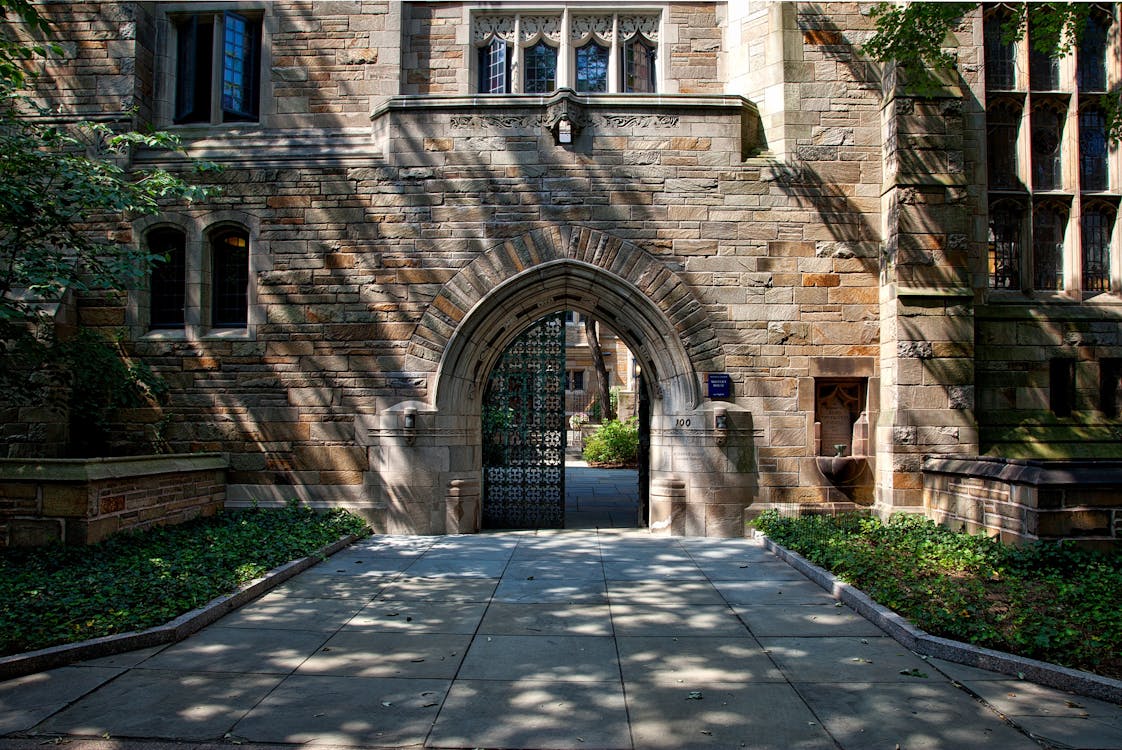
Even though it’s college application season, you don’t need to apply to every school. Instead of randomly applying, create a well-curated list of six to 12 universities or colleges. Organize your list in terms of which ones have the earliest deadlines to make sure those are taken care of first.
Things to consider when placing a college or university on your college application list.
ACCOMMODATIONS
Tip: You may find that talking with your teen and his/her IEP team to determine which of your child’s accommodations were most helpful throughout high school. While there are no IEPs or 504 plans in college, your child is still protected under Section 504 Of The Rehabilitation Act. The Attention Deficient Disorder Association suggests that college students with ADHD advocate for their own accommodations such as extended time for tests, permission to record lectures, or written instructions. (You can read more examples here.)
To see what kind of ADHD support is at each school, contact the school’s office of disability to learn more about what support (including ADHD support groups) might be on campus.
Take all of this into account when creating your list of schools.
GRADE REQUIREMENTS
Each school will have their own requirements:
- Minimum GPA
- ACT scores
- SAT scores
If your child’s grades or scores don’t meet any of the admission requirements, don’t put the school on the list — as tempting as it may be.
MAJORS AND OTHER AREAS OF STUDY
Another important element of choosing the right school: finding a school that caters to your child’s interests. Consider your teen’s academic strengths and weaknesses. Teens with ADHD tend to excel more in courses where the subject matter interests them. To pinpoint a potential major or find a school that offers this major, ask the following questions:
- What subjects do I love the most?
- What are my strengths?
- What are my weaknesses?
- Are sports an important part of my experience on campus?
- What other extracurriculars do I want to particulate in? (Drama club, etc)
- Do I want to stay closer to home? Is distance an issue?
- Do I prefer to commute to school?
- What role do my finances play in this decision? (In-state tuition, scholarships, etc)
- Do I already have a post-grad career in mind?
All of these answers can help shape your teen’s list of schools.
3. Time to Apply!
Once you’ve got your list, your teen needs to gather any and all necessary items. Depending on the school the list may vary, but most schools want to see:
- High school transcripts
- SAT and/or ACT scores
- College essay
- Letters of recommendation
- List of extracurricular activities, sports, music, or other talents
- Evidence of community service
Over 900 colleges accept the Common Application (you can find it here), which can save time in the college application process. However, not all schools accept the Common App.
When your teen sits down to apply, keep these tips in mind:
- Work in an uncluttered, distraction-free space
- Work on a full belly
- Get a good night of sleep before working on applications
- Avoid rushing; make time to go back and proofread everything before submitting
- Following the writing process for the essay: brainstorm, free write, outline, draft, edit, revise, proofread
While a college application must be 100% original and completely written by the applicant, you can boost your odds of delivering a top-notch essay by getting (the right kind of ) help. Consider brainstorming ideas with an English teacher at your school and getting feedback from your teacher. And as always, check your work with grammar and spelling checking tools. You can also get help via books. College Essay Essentials is a stress-free roadmap for crafting college essays, and it’s written by a college counselor. (You can find it on Amazon or your local library.)
Once an application is finally submitted, cross it off on the first list that you and your teen made.
Getting Your Teen’s ADHD Under Control
Even with these tips and strategies, unmanaged ADHD can make the process challenging. If your teen is struggling to control his or her ADHD symptoms, we can help. Our multidisciplinary team is experienced in diagnosing and treating ADHD. Whether your teen needs therapy, medication management, or a combination of both, we can help your teen thrive.
To make an appointment or to learn more, call us at 502-907-5908. You can also request an appointment here.
Learn More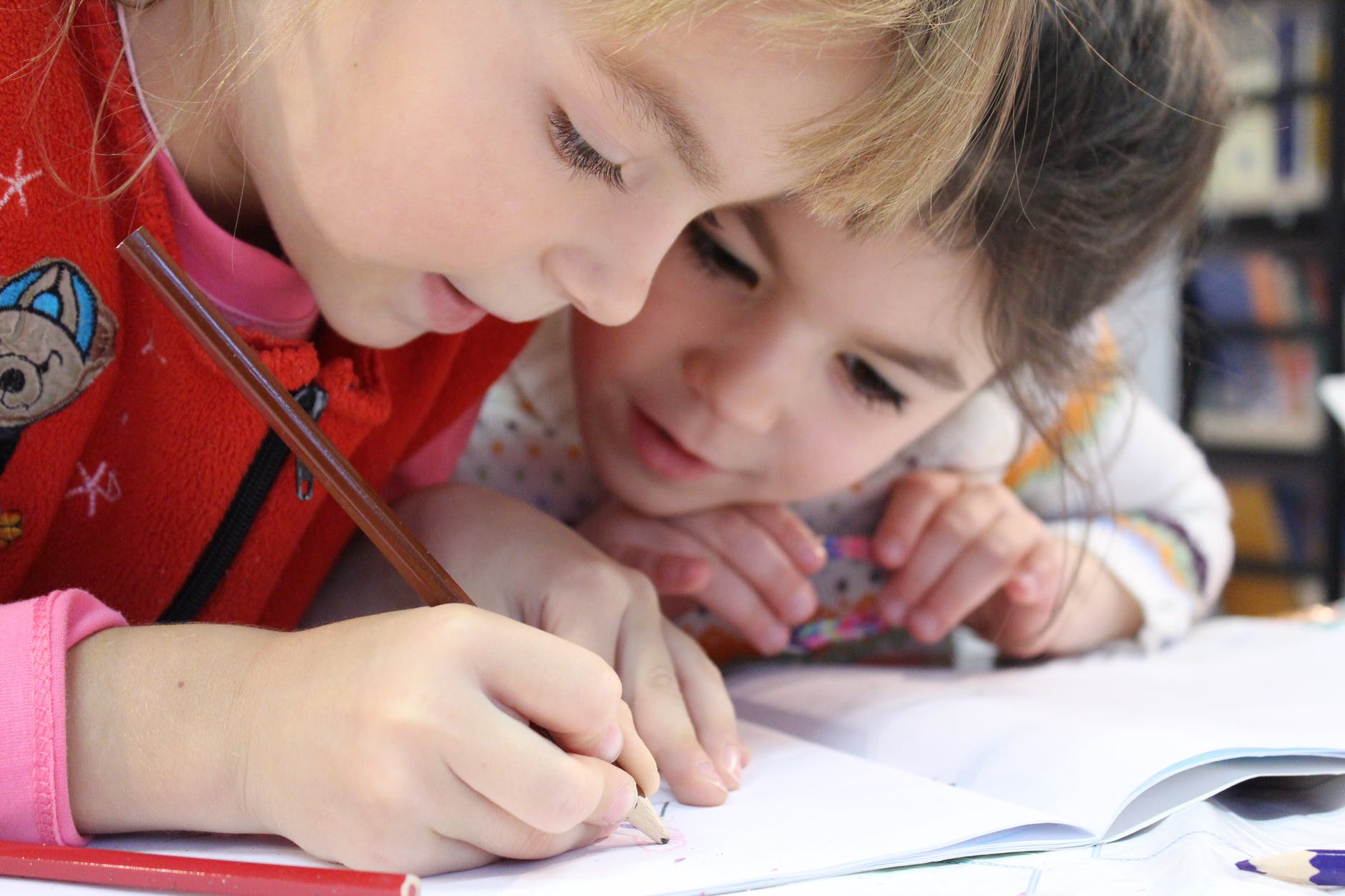
6 Tips to Help Children with ADHD Head Back to School
In many counties in Kentucky, school has been in session since about the middle of August. That means we’re about 2-3 weeks into the new school year. Adjusting to new routines — such as a brand-new school year — can be difficult for children with ADHD.
According to the Centers for Disease Control and Prevention, approximately 9.8% of school-aged children in the United States have Attention Deficit Hyperactivity Disorder (ADHD). ADHD can make it more difficult for your child to stay on task and pay attention in school, but it’s not just the school work that can be hard. Back-to-school time also contributes to increased stress and even anxiety due to the sudden changes in routine and new situations.
These strategies can help your child adjust back to the school-time routines.
1. Re-establish Bedtime Routines
Many kids stay up later in the summer, so it can be harder to adjust back to the earlier bedtimes during the school year. If your child is still struggling to get back into a bedtime routine, keep these tips in mind:
- Practice good sleep hygiene
- Avoid TVs, tablets, and screens for 1-2 hours before bed
- If using e-readers, make sure the amber/night mode light is on (learn more about warm-lights here)
- Use a white noise machine
- Sleep in a cool, dark room
Certain cues, such as putting on pajamas or taking a warm bath, can help signal to your child and help them prepare mentally for bed. Engage in calming activities before bed and avoid any activities that are too stimulating or exciting right before bed.
2. Prepare Your Child’s Homework Area
Part of a successful school year includes good study habits at home. If your child is old enough to have homework or require study time, prepare a study place so your child has a designated place at home to work. For example, it can be distracting for a child with ADHD to try and work in a busy area of the home. Instead, create a study place in a quiet area of the house free from major distractions (such as a busy entryway with people coming and going.)
Include place to store books and other school supplies, paper, pencils, a trash can, comfortable seating, and proper lighting.
3. Create a Calendar for Extracurricular Activities
Children with ADHD often thrive on predictability, but with many after-school activities, it can be harder to predict the schedule on any given day. Creating a regular school schedule can help your child find the predictiabily he or she craves.
Create a family calendar and post it in a central location ahead of time. Include school drop off and pick up times, after-school activities, sports practices and games, appointments, and other family obligations.
4. Talk with Your Child’s Teacher
If you have concerns about your child’s behavior or academic performance, don’t hesitate to reach out to your child’s teacher. Your teacher may provide valuable information to you and vice versa!
Not sure what to say? Read this article for tips on talking to your child’s teacher about ADHD.
5. Practice Calming Exercises
A new school year — and all of the new activities and environments, and challenges — can be stressful. Teaching your child calming exercises can help give them tools to use during the school day if they become overwhelmed or stressed. Good examples include:
- Breathing exercises
- The 5-4-3-2-1 ground method
- Stretching (a good idea for recess)
At home, you can listen to calming music or try Calming apps.
6. Be Gentle and Encouraging
Remember to use positive reinforcement to remind your child that you believe in them, you are proud of them, and you appreciate good behavior (when you spot it).
- Check out this article for 16 Positive Parenting Phrases to use.
Get Help with ADHD This School Year
Preparation and sticking to a routine can go a long way in helping your child ease back into school routines. That being said, if you suspect your child needs more help managing his or her ADHD, don’t hesitate to reach out. Untreated ADHD can make it hard to focus on school, but with the right treatment, school doesn’t have to be so hard.
If you have concerns about your child — whether they have been diagnosed with ADHD or not — please feel free to reach out to our multidisciplinary team. Our team excels at treating ADHD with therapy, lifestyle modifications, and when needed, medication.
Click here to schedule an appointment.
Learn More
Holistic ADHD Treatment: What Does That Mean?
Around 6.4 million American children and teens live with attention deficit hyperactivity disorder (ADHD). [1] Adults can also have ADHD, and the Centers for Disease Control and Prevention (CDC) estimate that about 4.4% of adults living with ADHD.
Kentucky in particular has the highest rate of ADHD in the country with 19% of children diagnosed with ADHD. [2] At NextStep 4 ADHD, our team of psychiatrists, pediatricians, psychologists, therapists, coaches, and healthcare professionals offers treatments to help you not just manage ADHD — but thrive.
As an understanding of ADHD continued to grow over the last decade, the demand for treatment has also grown. The options for treating ADHD are more diversified than ever. There is certainly a lot of misinformation about ADHD that can often leave you uncertain and confused.
Don’t worry — you have come to the right place. We offer a wide range of comprehensive ADHD treatment options for you and your family.
NextStep 4 ADHD Serving Louisville, Kentucky
We proudly serve the Louisville, Kentucky area. This includes general psychiatry and ADHD treatment. Located on Park Plaza Avenue, our providers are happy to offer coaching, support, education, and in-clinic services to both adults and children. To request an appointment, click here.
What is ADHD?
Attention deficit hyperactivity disorder (ADHD) is a common mental health condition that impacts concentration, decision-making skills, and impulse control.
How Is ADHD Treated Holistically?
Untreated ADHD can affect your home, work, and even your relationships, but ADHD is treatable, and you can thrive with it! Medication is a hot topic when it comes to ADHD treatment, but it’s not the only option for treating ADHD. In fact, it can be just one aspect of a treatment plan.
There’s where holistic ADHD treatment comes into play. A holistic approach to mental health puts you as the patient — not your diagnosis — at the center of your treatment plan. By addressing their emotional, mental, and physical needs, a holistic approach to mental health means that we look at the whole person.
The team at NextStep 4 ADHD focuses on 5 core areas when approaching ADHD treatment: assessment, education, coaching, support, and medication.
Assessment
An accurate diagnosis is the key to managing your ADHD symptoms. An accurate assessment begins with a consultation with clinicians who are trained to diagnose and treat ADHD.
ADHD affects every part of your life — from getting organized to completing work projects — and working with an experienced ADHD specialist ensures that you get the treatment and tools you need to thrive.
We are experts in ADHD and know what to look for during the assessment.
Education
We don’t just diagnose you; we help provide education to you through discussions, resources, coaching, etc. General education about ADHD is essential for improving your life skills. We’ll help you learn how ADHD affects you individually, as well as how it impacts your family, loved ones, and even your co-workers.
Coaching
ADHD coaching helps you better manage your symptoms by teaching you how to practically apply the right tools and strategies to your life. ADHD coaching also provides accountability, so you can build successful behaviors and routines — and achieve your goals.
Support
Interacting with others who are experiencing similar challenges reduces any stigma or shame associated with ADHD. Maybe you’re a parent of a child with ADHD. Maybe you’re an adult with ADHD trying to build more organizational skills. Building a support system is essential.
At Next Step 4 ADHD, we support you as you make progress on your journey.
Medication
There’s no denying that medication can be effective, and it can be life-changing. Even though it is often the first line of treatment for ADHD, medication alone is not the answer.
As we say, pills don’t create skills.
Let us show you the benefits of a holistic and personalized ADHD treatment plan.
Spotlight on Our ADHD Care Team
Learn more about our compassionate and expert team here.





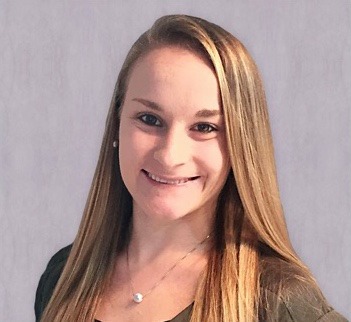



Your ADHD Center in Louisville, Kentucky
At NextStep 4 ADHD, we’re happy to provide comprehensive ADHD care. Whether you’re interested in in-clinic therapies or ADHD coaching, we are here to guide you with your next steps.
If you or a loved one needs to schedule a visit in our Louisville, Kentucky clinic, send us a message to request more information.
References:
- https://www.cdc.gov/ncbddd/adhd/data.html
- https://www.courier-journal.com/story/life/wellness/health/2014/05/02/kentucky-tops-us-adhd/8564911/

5 Summer Vacation Packing Tips for Teens and Adults with ADHD
Whether you’re a parent with ADHD in charge of packing for a family vacation, or you’re a teen packing for a camping trip with friends, there’s one undeniable truth: packing can be a struggle for individuals with ADHD.
Our multidisciplinary team knows that skills that require planning — one of the executive function skills — can be tricky, but we also know that like all skills, your planning skills can be strengthened.
In this blog, we take a look at the reasons why packing is so troublesome and what tips can make packing with ADHD so much easier.
3 Reasons Packing is Hard for Teens and Adults with ADHD
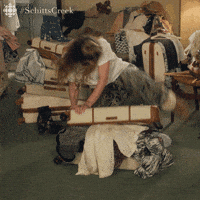
1. Packing Requires Planning
Planning is essential when it comes to packing, yet planning can be difficult for this with ADHD. Planning requires you to:
- Think about where you’re going and what specific activities you’ll be doing
- Consider any dress code requirements you’ll encounter
- Consider the weather at your destination
Even if you don’t enjoy planning, there are some steps you can take to make this part of vacationing more tolerable.
2. Packing Requires Decision-Making
Making decisions is hard for ADHD adults, and packing for a vacation is nothing more than making one decision after another.
- Should you bring one sweater or two?
- How many back-up pairs of socks do you need?
- Will the hotel have shampoo? Will that be enough?
- What if it rains? Do you really need a raincoat?
- Did I pack enough?
- What if my good blouse gets stained?
- If I bring these pants, I need to pack my other shoes, right?
Not only is this overwhelming, but too many decisions all at once can lead to decision fatigue.
3. Packing Requires Organization
It’s no secret that organization is one of the biggest struggles for adults and teens with ADHD. Lack of organization can lead to many problems, including wrinkled clothes, misplaced train tickets, and so.much.stress.
4 Travel Packing Tips to Make Packing with ADHD Easier
The good news is that these four tips can address all of the things you find so overwhelming with packing.
1. Make a list.
Before you even open your suitcase, make a list of everything you want to pack. Include a category for:
- Clothes
- Shoes
- Toiletries, such as contacts, contact solution, soap, sunscreen, etc.
- Electronic gear, including cameras, phones, tablets, and their chargers
- Snacks
- Tickets, reservation information, etc.
Need help starting a packing list? Download a Free Packing List here Download
2. Plan outfits by the day.
Clothing can be an overwhelming part of the packing process. Did you pack too much? Not enough? The wrong attire all together?
Once you print out your packing list, plan your outfits by day. It might look something like this:
Saturday
- Travel day
- Joggers, sweatshirt, sneakers
Sunday
- Brunch in the morning: black wrap dress, wedge heels, white sweater
- Scuba tour in afternoon: swimsuit, sarong, flip flops
Monday
- Hiking in the morning: green hiking shorts, REI shirt, wool socks, hiking boots, sweatband, hiking backpack, water bottle, first aid kit
- Evening wine tasting: pink sundress, wedge heels, white sweater
Once you start organizing your list this way, you’ll quickly identify if you’ve packed the right clothes for your itinerary — and if you can repeat any outfits or shoes.
3. Organize Your Suitcase

Once you’ve identified what clothes you need, pack your clothes in your suitcase. For some, using packing cubes helps organize your suitcase. Using packing cubes (or any other small pouch that holds only one day’s worth of clothes) makes it easier to search for what you need in your suitcase.
4. Pack Light
More stuff means more to keep track of, and that can be overwhelming. Within reason, packing as light as possible can reduce some of those overwhelming feelings. For example, choose a pair of shoes to pack that matches the majority of your outfits. This can help you reduce the number of shoes you bring.
Other tips to pack light:
- Bring e-books instead of physical books
- Use paperless tickets when possible
5. Start Early
Nothing adds to packing stress like waiting until the last minute. Start packing with plenty of time to spare. Write your list at least a week in advance so you have plenty of time to make sure everything you need to clean and ready. Or, if not, this gives you plenty of time to run out for last-minute supplies.
If you’re packing for something bigger than a vacation — such as a big move to college — start a few weeks in advance.
Need More Help with Planning and Organizing?
Planning and organizing are essential when you’re packing for a vacation, but that’s not the only scenario where you rely on these skills. You also need planning and organization to:
- Plan projects at work
- Organize household events, chores, and family schedules
- Organize your workload in college
- Determine order of priority for your to-do list
Comprehensive ADHD treatment, including therapy and coaching, helps you strengthen this skillset. Our multidisciplinary team can help you learn to THRIVE with tips just like this — packing tips for ADHD is just the start!
You can also request an appointment here.
Learn More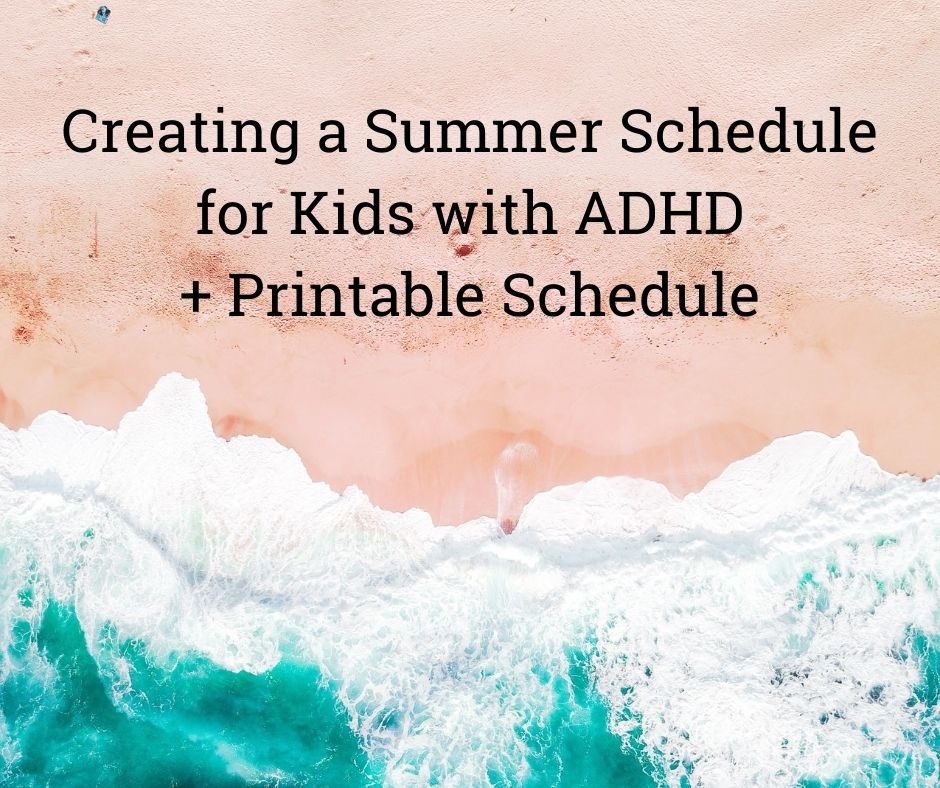
Creating a Summer Schedule for Your Child with ADHD + Free Printable Schedule
We’re still in the early days of Spring, but Summer will be here before we know it. And that means a big change in schedule and routines for kids.
The structure of the school year tends to fade into lazy summer days. And while some kids participate in programs, it’s important to still create a sense of structure and routine, especially for kids with ADHD. That’s become daily routine and structure are oh-so-important for helping kids with ADHD.
Below, our team of ADHD experts help shed light on creative ways to add structure to summer days.
Daily Schedules Matter … Even in Summer
During the school year, your child has a lot of routines. This includes:
- Regular bedtime routines
- Wake-up routines to get ready for school on time
- Meal times (set schedules for eating at school, snack time, etc.)
As we shift closer to summer, it’s important to not forgo all sense of schedules. Days tend to operate more smoothly when there is a schedule (even a flexible one) in place. Schedules are important because they help provide a sense of predictability for your child.
10 Ideas for Your Child’s Summer Schedule
Schedules don’t have to be rigid. Even just having a general sense of what’s happening is helpful for children. Here are 10 ideas to keep your summer schedule filled with fun and educational activities.
- Add lots of physical activities into your summer plans. Exercise is also beneficial for children (and adults) with ADHD. Examples include outdoor play (e.g, tag or catch in the backyard counts too!), trips to the pool (for fun or for swim lessons), bike riding, or even walking the dog around the block.
- Add plenty of arts and crafts time. (You can get some ideas here.)
- Talk with your child about what sports she or he’s interested in and explore options in your town. YMCAs have plenty of options, but you can also explore the Youth Leagues on the LouisvilleKY.gov site.
- Create a bucket list and try to fit in as many list items as possible. Examples include learning to skateboard or visiting the beach.
- Schedule in unstructured, imaginative play. Younger kids may like to play pretend, while older kids may read, listen to music, or simply enjoy the quiet downtime.
- To keep academic skills sharp over the summer, schedule in daily reading times and or study skills activities. Examples include summer bridge work, or review workbooks that cover the material your child studied throughout the year. This type of bridge work doesn’t have to be intense. You can also find interest-based classes on Outschool. For instance, if your child loves Mario or super heroes, you can find writing courses that sharpen writing skills while focusing on your child’s favorite interests. This is especially great for kids with ADHD who focus best on topics that interest them.
- Plan regular weekly trips to the library. Not only can you stock up on books, but many libraries also host weekly arts and crafts too. This is a no-pressure fun bonding activity.
- Use a large calendar to keep track of the family’s activities. This can be great for kids who need to see a visual calendar to help manage their time. Keep the calendar in a visual place, such as the kitchen. Include any vacations, appointments, work schedules (for older teens), and any sports activities.
- Review your family’s schedule the night before.
- Stay consistent with bedtime. Maybe summer bedtime isn’t as early as during the school year, but it’s still important to stay on a consistent sleep schedule.
Download Your Own Schedule for Summer
Need a blank calendar or schedule? We’ve got you covered! Download this FREE RESOURCE and use it to keep some structure in your summer.
Tip: You don’t have to schedule every second of the day. Try to create a summer routine that is predictable, yet still has plenty of flexibility when needed.
Talk to Us about ADHD Treatment
Even if you have the perfect summer schedule, your child can still benefit from other ADHD treatments, including therapy, coaching, and, in some cases, medication. Our multidisciplinary team can help your child learn to THRIVE.
To make an appointment, call us at 502-907-5908. You can also request an appointment here.
Learn More
The Signs of Bullying and What Parents Need to Know
Bullying and ADHD – is there a connection? According to a study published in the Journal of Attention Disorders, children with ADHD were 3.7 times more likely to be classified as victims of bullying, compared to their peers who were not diagnosed with ADHD.
As a parent of a child with ADHD, this can be alarming. However, it’s important to learn the signs of bullying so you can quickly spot a problem.
Types of Bullying
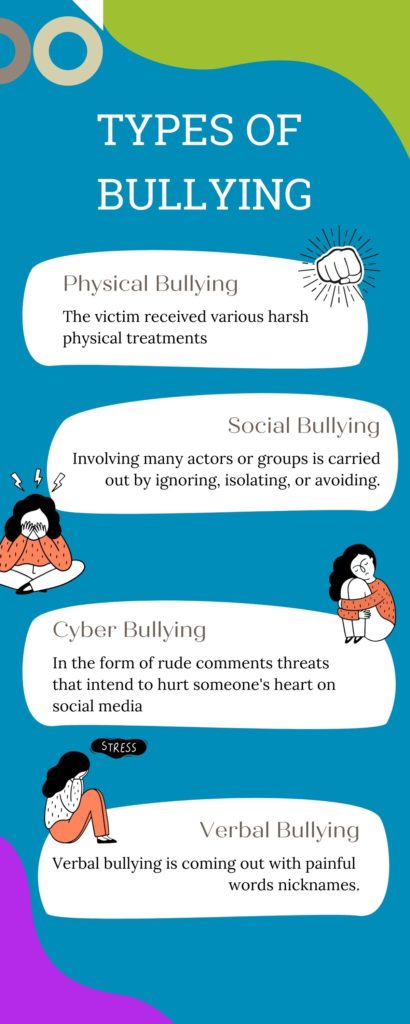
Signs of Bullying in Kids
While some children may come out and tell you there is a problem, many children struggle to talk about it. Common warning signs that a child is being bullied include:
Emotional signs of bullying
- Changes in your child’s sleeping or eating patterns
- Frequent tears
- Bouts of anger
- Mood swings
- Complains of stomach aches in the morning (and asks to skip school)
- Becomes withdrawn
- Becomes aggressive
- Easily frustrated or angry with siblings
You may also find that your child seems withdrawn and isn’t opening up easily. He or she may not want to talk about what is bothering him or her.
Physical signs of bullying
- Has unexplained injuries (bruises, cuts, or scratches)
- Comes home with missing or damaged belongings
- Comes home hungry or without any lunch money
Other signs of bullying
- Refuses to go to school
- Changes their route to school, if walking
- Frightened of walking to school or taking the bus
- Academic performance begins to decline
Effects of Bullying and What Parents Need to Know
What to Do If Your Child Is Being Bullied
Although tempting, it’s best not to confront your child’s bully (or their parents directly). Check with your school’s bully policy. The Stomp Out Bullying non-profit organization reccomends:
- To contact law enforcement immediately if your child has been physically threatened
- To check your school’s anti-bullying policy
- To check your state’s anti-bullying legislation (Here are Kentucky laws.)
Dealing with the Emotional Effects of Bullying
Even long after the bullying has been addressed by the school or websites (or wherever the bullying was taking place), the hurts don’t fade easily. You may also find that your child benefits from therapy after bullying. Therapy can your child navigate through the complex emotions of anger, anxiety, sadness, associated with the psychological hurts of bullying.
If you need to schedule a therapy session, we’ll just a call or click away.
Learn More
10 Study Tips for Children and Teens with ADHD
Whether your children are returning to in-person learning, e-learning, homeschooling, or a hybrid combination, there’s one thing that remains constant: homework. And study tips for ADHD can make all the difference for children and teens with ADHD.
In this article, we’ll cover 10 study tips for ADHD to make your child’s study time and homework time more productive — and more peaceful.
1. Create a “Study Only” Space
Distractions are one of the biggest road blocks when it comes to homework. Toys, TV, and even siblings who want to play can hinder study time. Children with ADHD are more likely to be distracted by their surroundings. The key is to create a “study only” space to help limit distractions. Trying to study in the family room while a sibling is playing or watching TV can be a big temptation.
Instead, create a comfortable place where your child can work with few distractions. Use this as a quiet place to work far away from noise and movement. Your child can clear his or her mind and focus on the tasks at hand.
Study spaces can include a quiet living room, the dining room table, or even the den (as long as the TV is off!).
Don’t do homework in the bedroom. The bedroom is a place for sleep and relaxation — not school work and stress.
Study Tip
2. Make a Study/Homework Schedule
Most children thrive with consistency. And for children with ADHD, it’s even more essential to have a consistent routine. Adding a dedicated study/homework time to your child’s after school schedule helps to start his or her focus. Set a time each day for your child to study, whether he’s e-learning, in-person learning, or homeschooling. This is one of the best study tips for ADHD!
3. Add Breaks to Your Schedule
ADHD can make it hard to focus, especially if your child is studying a subject that’s not-so-interesting to him. Breaks are a must to help maintain focus and avoid burnout. Add a break time and encourage your child to eat a snack or even go for a quick walk with you. This quick little break allows the mind reset! Bonus: if you choose to move around for the break, it will help burn off extra energy.
4. Fuel Up
We just covered the importance of adding a break to a long study session. Now we’re going to discuss the importance of starting the study session already fueled up and ready to go. If your child is hungry, he’s less likely to have a good study session. Healthy, nutrient-dense snacks are the best brain fuel.
Choose healthy foods that won’t crash his or her blood sugar. Certified Health Coach Pam Valdes suggests, “A combo of protein and complex carb (fiber-rich) snacks fuel energy and help stabilize blood sugar levels. For this reason, fruit and nut combinations work really well, such as apple & peanut butter, grapes & pecans, orange & almonds, pear & walnuts.”
5. Organize the Homework Station
Study tip #5 is all about organization. When you create a homework station for your child, organization is key to his or her success. Organize school supplies with:
- Colored folders or binders
- Colored notebooks or dividers
- Colorful labels
- Pencil case or pencil/pen caddy
However you decide to organize the station, it’s important that everything has a proper place. When everything — whether that’s a pencil or a notebook — has a place, your child spends more time studying and less time looking for lost pencils or books. This includes having a spot to hang up your child’s backpack.
6. Encourage and Support Your Child
A positive, supportive environment is a crucial ingredient to your child’s study area. Encourage your child to always try his or her best, and this is one study tip that can go far. When your child feels encouraged and supported, he’s more likely to see study time as a positive thing. If your child struggles, it’s okay to offer age appropriate help. Encourage your child look at challenges in a positive light to keep him or her motivated and develop a growth mindset.
Here are eight phrases that you can use to inspire and encourage your child:
- I can see you’re really trying!
- Keep on trying!
- You almost got it!
- I can see you tried hard.
- I appreciate your hard work on this project.
- How do you feel about that?
- I’m glad you enjoy learning!
- I’ll bet you knew you could do it!
If your child is struggling, don’t hesitate to stay in contact with your child’s teacher. When you know what’s going on in the classroom, it’s easy to spot red flags when they arise.
7. Understand Your Child’s Learning Style
Did you know that there are several different learning styles? Auditory, visual, or even kinesthetic — they are all valid and common ways of learning. Change studying habits to fit his or her learning style. For example, if your child is a kinesthetic learner, you can encourage the use of models or physical touch. You might also encourage your child to write down the facts he is trying to memorize. Use a finger to physically touch the items he is counting. According to Houghton College, movement can also help increase focus and attention while studying. This includes:
- Chewing gum
- Tapping a pencil
- Pacing (perhaps while you orally quiz your child on their test materials)
On the other hand, a visual learner may do better reading his or her own notes from class rather than an oral review.
The bottom line: Every child learns differently. Studying in a way that works for him or her can help improve both understanding and retention.
8. Know When It’s Time to End a Study Session
Children with ADHD can become easily frustrated or struggle to manage emotions. Encourage your child to keep going, but don’t push your child too much. If he or she has hit his or her limit, it’s okay to end a study session.
Praise your child after he or she finishes his or her homework or completes a study session, but remember to praise progress and effort.
9. Teach Your Child New Study Skills
Take each study session to the next level by teaching your child new study skills. A few examples of study skills include: mnemonic devices, effective reading, practicing concentration techniques, and efficient note-taking.
If your child is e-learning, there may be an adjustment as he or she learns to take notes via online classes. Be sure your child has plenty of notebooks, highlighters, and other tools for good note-taking.
10. Need More Than Just Study Tips for ADHD? Get Help If Your Child Needs It
Are you searching for actionable strategies to help your child with ADHD study better? In addition to practicing these study tips and strategies, your child may benefit from professional care. Here at Next Step 4 ADHD, we take multidisciplinary and holistic approach to your child’s ADHD treatment. Dr. Kristi Briscoe is a board-certified pediatrician specializing in effective medication management, parent coaching, and proven strategies to motivate and encourage children with ADHD.
We also offer coaching and therapy. You can see our multidisciplinary team of compassionate and expert providers here.
To make an appointment, call us at 502-907-5908. You can also request an appointment here.
Learn More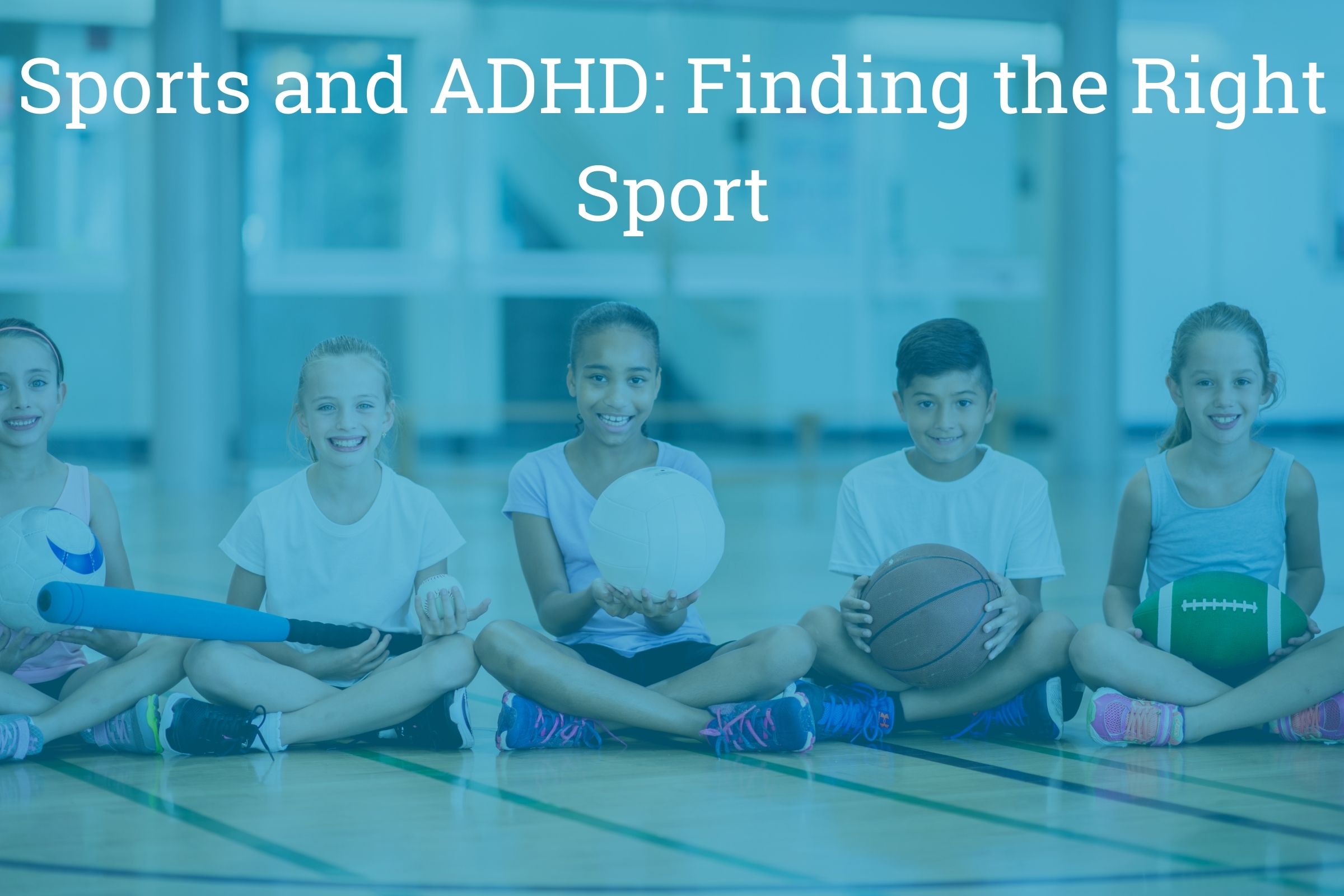
Choosing the Best Sports for Kids with ADHD
Physical exercise is good for the physical and emotional health of all children, but exercise can be even more important for kids with ADHD — and sports are a great way to make sure exercise is in their daily schedule. Exercise can provide children physical exercise, a chance to develop social skills, a chance to boost self-esteem, and practice listening to directions and working as a team. But do all sports offer the same level of benefit for children with ADHD?
A common condition, ADHD affects more than 19% of children in Kentucky (11% overall in the nation), according to the Centers for Disease Control and Prevention. The three main symptoms of ADHD are impulsivity, inattention, and hyperactivity. Some children may struggle more with the inattentive symptoms, while others struggle more with the hyperactivate symptoms. Some children experience both inattention and hyperactivity.
While any physical activity is good for children, knowing which type of ADHD your child has can help you find the right sport for your child. For example, children with a lot of energy may favor more active sports. In other words, depending on the severity of your child’s symptoms, he or she may find some sports more enjoyable than others.
Two factors that may influence your child’s decision include:
- Coaching dynamic
- The pace of the sport
1. Coaching dynamic
If your child struggles with inattention, a sport with strong 1:1 coaching may be beneficial. This allows for a direct interaction between the coach and your child. One-on-one instruction creates less distraction because the coaching/instruction is directly aimed at your child.
Sports with more of a focus on individualized coaching includes:
- Cross country
- Track and field
- Wrestling
- Martial arts, including Tae Kwon Do
- Swimming
- Dance
- Gymnastics
2. Pace
While individual sports and 1:1 coaching has benefits, group sports also hold their own benefits for children with ADHD. Team sport with a quick pace can be a great outlet to release energy.
Fast-paced sports include:
- Basketball
- Hockey (both ice hockey and skating)
- Soccer
- Basketball
These sports are not idle, and they do allow for constant motion. Less idle time on the field means less chance for distractions.
Benefits of Exercise for Kids with ADHD
Whether your child is getting ready for soccer, basketball, or swimming, he or she will reap many benefits of participating in a sport. The benefits of exercise for kids with ADHD include:
- Reduced stress and anxiety
- Improved impulse control
- Reduced compulsive behavior.
- Boosted working memory.
- Improved executive function skills
- Opportunity to practice social skills and build interpersonal skills
What If Exercise Alone Isn’t Enough to Manage Hyperactivity
Organized sports can help your child feel confident and manage high energy levels, but it’s not always enough to manage ADHD symptoms. In addition to physical activity, there are other strategies for managing ADHD, including:
- Eating well-balanced meals
- Practicing good sleep hygiene
- Attending therapy
- Medication
Not sure where to start? Our multidisciplinary team can help you through therapy (for your child as well as parenting coaching), medication, and guidance with lifestyle modifications. Book your appointment here and get started with your next steps today.
Learn More
How Therapy Helps Treat ADHD in Kids
Although ADHD medication can help reduce the symptoms of ADHD, medication isn’t the only treatment option. In fact, ADHD responds quite well to lifestyle modifications and therapy. Our team of expert providers excel at multidisciplinary ADHD treatment programs, which can include medication, coaching, lifestyle modifications, and CBT for kids.
But if you’re considering ADHD treatment for your child, you might wonder how therapy affects ADHD. That’s just the question we tackle in this blog: what is CBT and how does therapy help kids with ADHD.
What Is CBT Therapy?
CBT is short for cognitive behavioral therapy. Cognitive Behavioral Therapy is a type of psychological treatment used to treat a variety of mental health disorders including anxiety, PTSD, and ADHD. CBT is based on three principles:
- That psychological problems are based in faulty thinking
- That unhelpful thought patterns impact your behaviors
- That you can learn better thought patterns to change your behaviors
In other words: CBT is a type of goal-oriented psychotherapy that aims to change negative patterns of thinking and change the way a child feels about his/her self, as well as his/her abilities. As an ADHD therapy, your child will learn to identify negative thought patterns and learn to regulate behavior.
Watch the following video to learn more about CBT:
CBT for ADHD in Kids
What types of thought patterns and behaviors can CBT help with? For both adults and children, time management, organization, motivation, and emotional regulation can be trouble spots. Difficulty with time management, emotion regulation, and task initiation can lead to:
- Low self-esteem
- High stress levels
- Feeling defeated
- Negative self-talk
Therapy for kids with ADHD provides the space for your child to work past his or her struggles — and see how ADHD influences those thoughts and behaviors. During each session, your child works with his or her therapist to explore the thoughts, emotions, and behaviors during difficult situations. Your child has the opportunity to explore other ways in which the situation could have been handled.
Your child also builds coping techniques to help avoid repeating the same situation of the future.
Let’s recap! CBT can help children with ADHD by helping your child learn to:
- Manage negative emotions
- Stop negative expectations
- Identify negative behavioral patterns
- Cope with stress
- Handle transitions throughout the day better
- Identify self-defeating behaviors
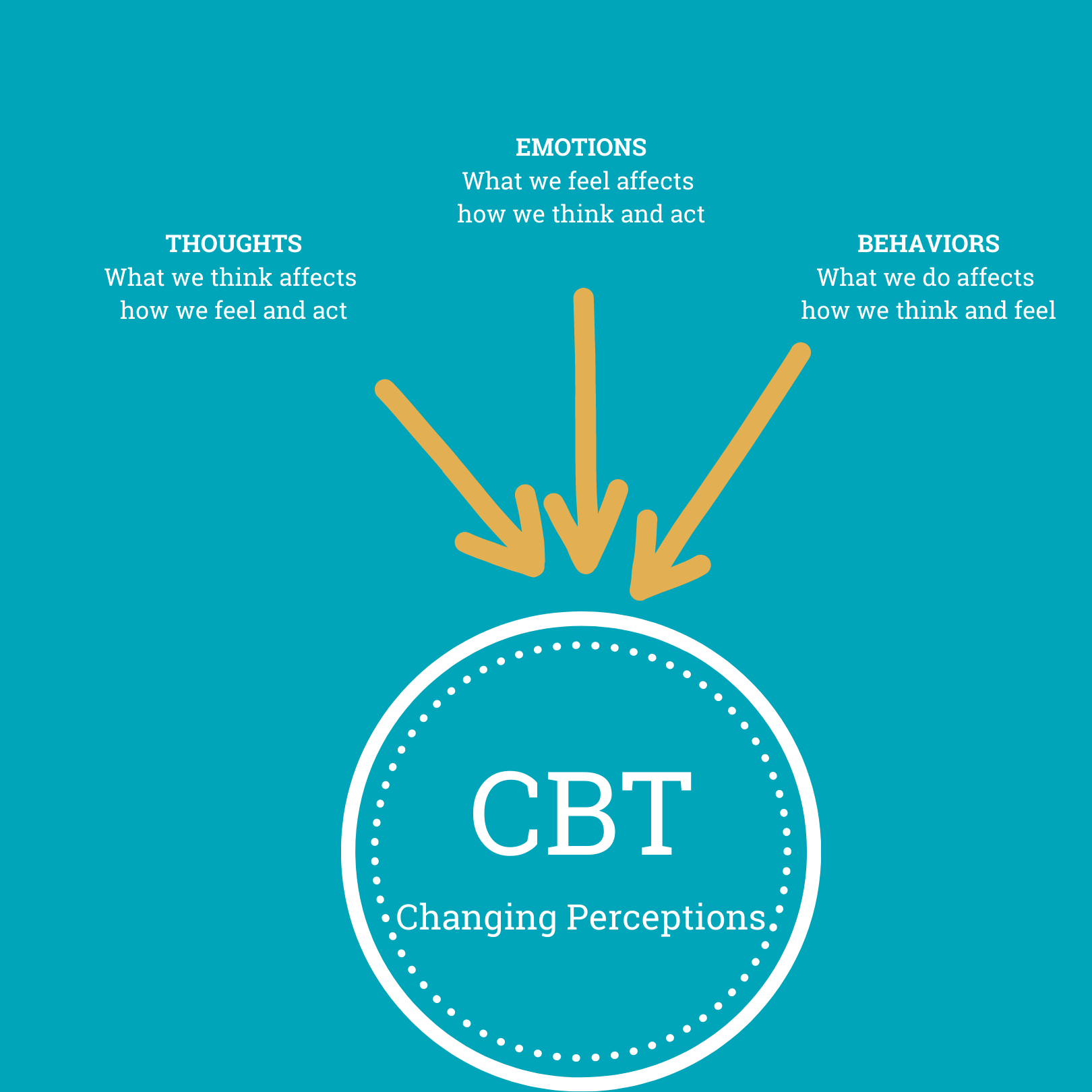
CBT Helps Children with ADHD in Another Way…
If your child has co-occurring disorders — such as anxiety or depression — CBT can also help your child manage those mental health conditions as well.
Not sure if your child is dealing with ADHD or anxiety — or both? You can learn more about anxiety and ADHD in this blog post. Our team excels at diagnosing and treating co-occurring disorders, so don’t hesitate to reach out to us to schedule a psychological evaluation.
For children with ADHD, psychotherapy enables your whole family to create beneficial strategies that reward positive behaviors. Here at Next Step 4 ADHD, we are a multidisciplinary practice, and our team of experts excels at treating ADHD and anxiety in children. If your child is struggling with ADHD — or any other mental health condition — we can help. Book your appointment here and get started with your next steps today.
Learn More
Focus Music? Here Are 5 Spotify Playlists to Promote Focus
Last November, we wrote about the benefits of music and how classical music can help your child (or you!) focus when working on homework or a project.
Focus Music: Why It Works
Here’s an excerpt our previous article about music:
According to the experts at Johns Hopkins, music can reduce anxiety and lower your blood pressure. It can also stimulate and strengthen areas of the brain that tend to be weaker in those with ADHD. When it comes to music as a study aid, it can support the auditory, motor, and visual/spatial cortices of the brain. These cortices are areas of the brain linked to speech and language skills, math and reading comprehension, problem-solving, attention, and focus.
Classical music, no doubt, promotes focus, but what if you don’t want to listen to just one YouTube video? Turning on a playlist (rather than one song at a time) can help limit distractions and keep the good tunes playing.
Below is a round-up of classical playlists on Spotify to help keep your focus strong.
1. Classical Essentials
This playlist has over 17 hours of music and is great for those who are just starting to explore classical music.
2. Best Classical Music
This list has over 9 hours of peaceful classical music that features the classics (like Bach) and new artists too.
3. Calming Classical
Over four hours of calming classical music.
4. Classical Music: 50 Greatest Tracks
This list features 5 hours and 40 minutes of the most renowned chamber music pieces and concertos.
5. Pop Goes Classical
My personal favorite, this list features classical versions of current pop songs.
Music Is Just the Start…
While focus music is a good start, it’s not a magic tool. If you’re struggling to stay focused at work, or if your child is struggling to stay focused at school, our multidisciplinary team excels at diagnosing and treating ADHD — and we’re just a call or click away.
To make an appointment or to learn more, call us at 502-907-5908. You can also request an appointment here.
Learn More